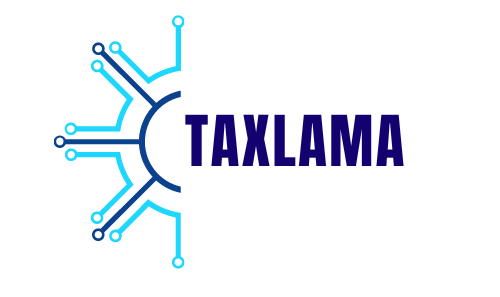Large wind farms connected to the power grid on a scale offer a significant energy supply. This strategy benefits from cost savings through increased production, making it an economical and effective way to produce eco electricity. With the rising need for energy and government backing, large utility-scale wind power has become an attractive option for investments.
Key Considerations for Investors
While the potential returns in utility scale wind power are substantial, careful evaluation is essential.
Investors Should Consider the Following Factors:
- Market Dynamics: Analysing market trends in the context of green hydrogen involves observing the growth of renewable energy consumption, including the increasing adoption of solar, wind, and hydroelectric power. Government policies supporting the development and integration of renewable energy sources, such as wind power, are crucial factors influencing the market dynamics. Additionally, technological advancements in hydrogen production, storage, and transportation play a significant role in shaping the market landscape for green hydrogen.
- Financial Performance: An assessment of project financials for green hydrogen initiatives encompasses evaluating capital expenditures (CAPEX), operational expenditures (OPEX), and projected return on investment (ROI). Understanding the costs associated with wind turbines, renewable energy infrastructure, and ongoing operational expenses is essential for conducting a comprehensive financial analysis. Projected ROI calculations provide insights into the economic feasibility and long-term financial viability of green hydrogen projects.
- Regulatory Environment: The regulatory environment significantly impacts the profitability and attractiveness of wind energy projects. Government incentives, feed-in tariffs, and other regulatory policies aimed at promoting wind power production and utilisation can directly influence project economics. Analysing the impact of supportive regulatory frameworks on revenue streams and project financing is integral to assessing the overall profitability of green hydrogen initiatives.
- Risk Assessment: A comprehensive risk assessment for green hydrogen projects entails evaluating project-specific risks, including variability in renewable energy resources, challenges related to grid connection and integration, and potential equipment failures in hydrogen production and storage systems. Identifying and mitigating these risks is essential for ensuring the successful implementation and operation of green hydrogen projects.
- Diversification: Considering diversification strategies, such as spreading investments across multiple wind energy projects or expanding into the broader renewable energy sector, can serve as a risk mitigation approach. By diversifying investment portfolios, potential risks associated with project-specific challenges, market fluctuations, and technological uncertainties can be mitigated, leading to more balanced and resilient investment strategies.
Investment Strategies
Several Investment Avenues Exist for Those Interested in Utility-Scale Wind Power:
- Direct Investment: Directly investing in wind farms or wind energy companies presents the potential for higher returns, as well as the opportunity to have a more direct impact on the operations and development of wind energy projects. However, this approach also carries inherent higher risks due to the complexities of project development, uncertain regulatory environments, and exposure to market fluctuations.
- Public Equities: Investing in publicly traded wind energy companies offers exposure to the sector with potentially lower risk compared to direct investments in specific projects. By investing in publicly traded companies, investors can benefit from diversification and potentially reduced exposure to project-specific risks, while still participating in the growth and performance of the broader wind energy industry.
- Private Equity and Venture Capital: Private equity and venture capital investments in early-stage wind energy projects and technologies can offer high-growth potential but also involve higher risk. These options focus on supporting the development and commercialisation of innovative wind energy solutions, often at earlier stages of the project lifecycle, and may provide opportunities for substantial returns, albeit with elevated risk levels associated with emerging technologies and market uncertainties.
- Infrastructure Funds: Investing in diversified funds that focus on wind power and other infrastructure assets can provide a balanced approach to gaining exposure to the wind energy sector. Infrastructure funds offer the potential for stable, long-term returns while spreading investment across a range of projects and assets within the renewable energy and infrastructure space, helping to mitigate specific project risks and enhance portfolio diversification.
- Green Bonds: Green bonds represent debt securities specifically designed to finance sustainable and environmentally friendly projects, including wind power initiatives. Investing in green bonds tied to wind power projects offers a fixed-income investment opportunity with a clear environmental impact, allowing investors to support renewable energy development while potentially benefiting from predictable returns associated with fixed-income instruments.
Conclusion
Utility-scale wind power offers a compelling investment opportunity for those seeking to contribute to a sustainable future. By carefully considering market trends, financial performance, regulatory factors, and investment strategies, investors can position themselves to capitalise on the growth of this promising sector.





hgh benefits bodybuilding
References:
wehrle
sustanon dianabol cycle
References:
how to take dianabol first cycle (Judy)
testo hgh
References:
testosterone and hgh cycle
legal steroids d bol
References:
is Testosterone legal (https://solegeekz.com)
ipamorelin/cjc-1295
References:
Can ipamorelin be used with tirzepitide
can i stack ipamorelin ghrp6 and cjc1295 together
References:
cjc 1295 ipamorelin side effects reddit
ipamorelin vs bpc 157
References:
is cjc 1295 Ipamorelin Fda Approved
ipamorelin 2mg axiom peptides where to buy
References:
Valley.Md
cjc 1295 ipamorelin capsules
References:
how much bacteriostatic Water do you mix with ipamorelin
drug ipamorelin
References:
cjc 1295/ipamorelin blend dosage